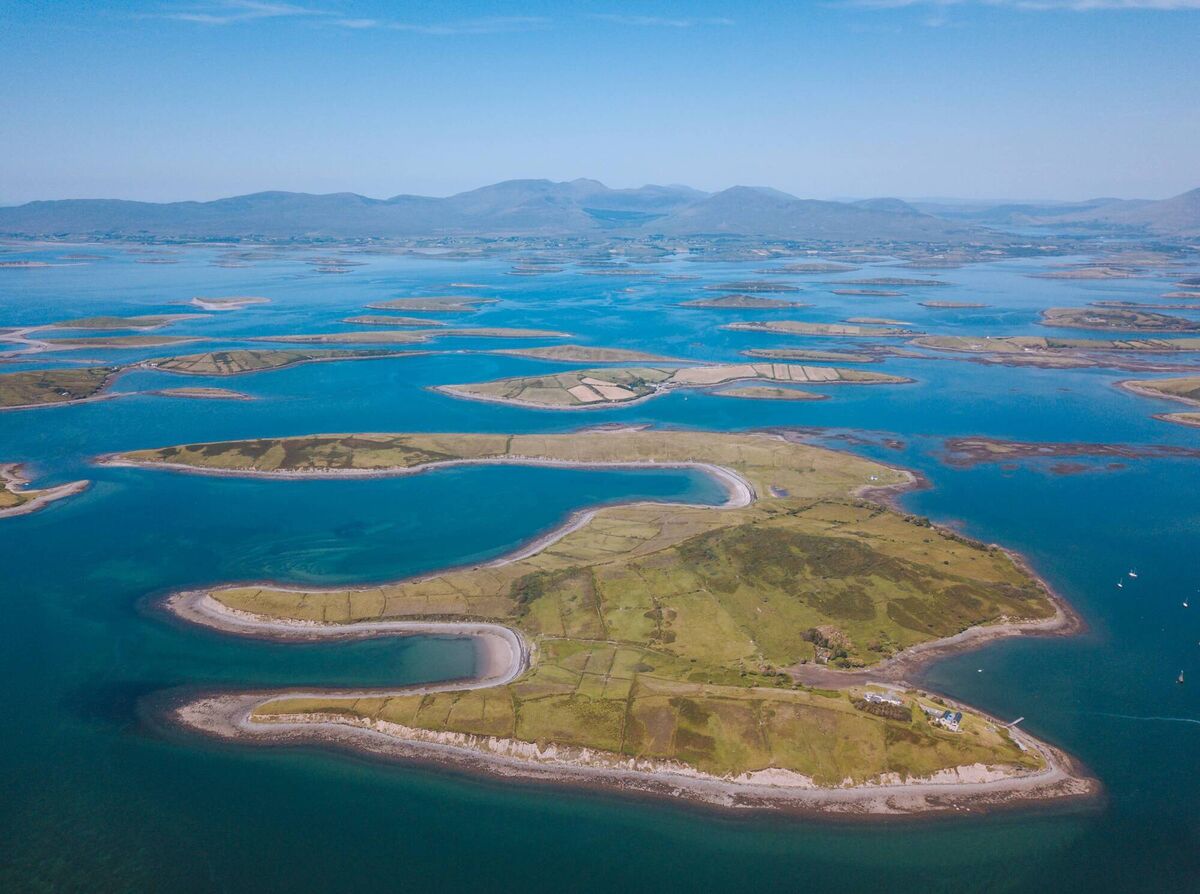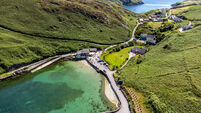Islands of Ireland: Collan More, County Mayo — created by the last Ice Age's retreating glaciers

Islands of Ireland: 198-acre Collan More Island, in Clew Bay, County Mayo
This lovely island has got to have the strangest shape of all our islands. Most of our islands are generally round or ovoid with inlets and bays, of course. Collan More in the centre of Clew Bay looks like a duck with an extended head which has turned its back on the coast: three peninsulas just westward to the ocean, two of them forming a large bay, while the eastern side is a more or less straight line.
The reason for the dramatic shape is due to the action of the retreating glaciers of the last Ice Age, 12,000 years ago when the islands of the bay were formed. Vast melting glaciers deposited huge banks of alluvial matter which by further action of wind and tide over the millennia left these exotic shapes of some of these islands. The hooked ends of some of the drumlins were caused by a re-glaciation, according to some scientists. The effect is odd and recalls the experimental shapes of surrealist paintings.

Discounting Clare Island which lies at the exit of Clew Bay, Collan More with its 198 acres is the next biggest, though still massively dwarfed by it. However, it is only the second-highest at 46m. That honour goes to Inishturkbeg further to the north. The island could almost be three distinct islands as low-lying areas nearly cut off the southern and northern peninsulas. And with rising sea levels that scenario could become a reality.
In his comprehensive study of the islands of Clew Bay, Michael Cusack writes: “The island was inhabited by 218 people in 1841. In 1911, it included Collan More National School and nine private dwellings occupied by 40 people. By 2006, there were just 18 inhabitants and the school had closed”.
The population of the island peaked at 215 people in 1851 before a dramatic decline to 63 people in 1861. By 1936 it was 25 people and none by 1966.
Some of the names of the people who lived on Collan More are: Casey; Malley, Moran and Purcell. The island was then uninhabited until 1991 when five people moved there. They had gone by 1996 before a new group moved in 2002 and that grew to 18 people by 2006. However, that latter-day peak has again declined.
Collan More was home to the Glenans Sailing Club which also had a base in Baltimore, West Cork. Another adventure centre has now replaced the sailing club which closed about 10 years ago.
There has been a huge number of variations to its name, from Collyn (1607); the island of Collin (1617); Ilandcullen (1698); Island Calling (1710); Collins (1748); and Cullenmore (1838).
The hospitality of islanders is legendary and Collan More was no exception for the welcome it extended to people — especially seafarers. This account from the Londonderry Sentinel in 1945 by a contributor to the newspaper illustrates the point:
“For various reasons I had to lie at anchor in Inishlyre Harbour at the entrance to Westport Harbour. A remote place, with no shops. About twice a week I went ashore to have supper with a family called O’Malley.
"Mr O’Malley in his ragged homespun coat presided with as much dignity and charm of his humble board as the mightiest in the land, and we partook of boiled eggs, tea and delicious homemade bread and butter. In due course, I came across many people from Galway, Clare and Kerry, but retain the most delightful memories of the Mayo people, and consider them far the most charming people of all the west coast of Ireland.”
On a recent kayak trip to this island, a lone heron flew silently above stormy waters to its nest high in the trees, marking the edge perhaps of a heronry. And in a vote of confidence for island living, people were seen restoring an old cottage on the northern shore. And they proved very helpful to a disorientated kayaker half lost in the myriad islands.
How to get there: Clew Bay tours; westportcruises.com. Or ask at Rosmoney pier.
Other: by Michael Cusack (Berry Print);









